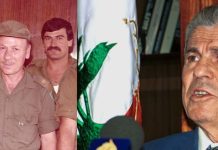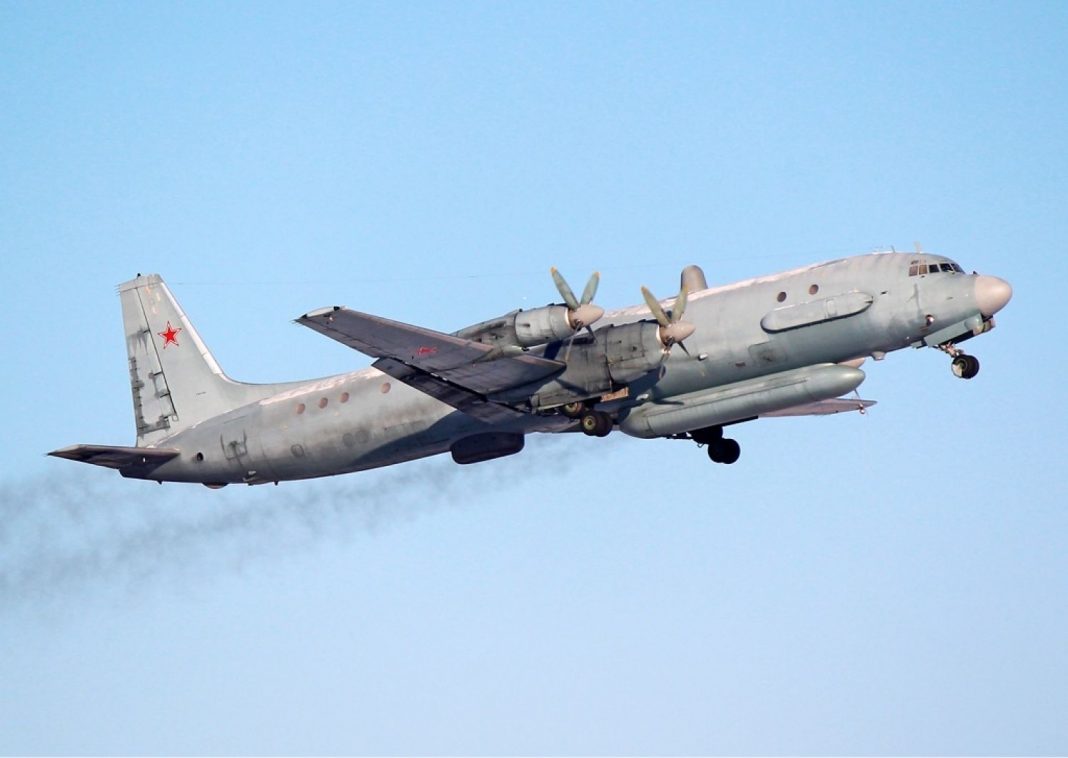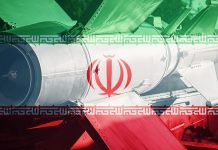Analysis/’With Russian Presence in Syria, Israel Air Force Has to Be Very Precise’
عاموس هاريل من الهآررتس: على إسرائيل ان تكون غارتها دقيقة جداً في سوريا بسبب وجود روسيا فيها
Amos Harel/Haaretz/September 21/18
Brig. Gen. Uri Oron, head of the Israeli Air Force Intelligence, talks to Haaretz about the fast-changing situation in the north, the new reality in Syria and how Israel maintains its aerial superiority.
When Brig. General Uri Oron spoke with Haaretz earlier this week, nobody could have foretold events, though Syria and especially the Russian aerial presence there were central to the conversation with the Israel Air Force’s head of intelligence.
Asked when he started the job, Oron answered, “With Putin.” Which means the summer of 2015, shortly after which the Russian president sent two squadrons to Syria. Back then Syrian President Bashar Assad seemed headed for defeat, but the Russian jets would later sway the civil war in Syria in his regime’s favor.
The Russian return to the region, two and a half decades after they had been perhaps present in spirit but missing in action because of the collapse of the Eastern Bloc, changed the rules of the game on Israel’s northern front. In contrast to some of the earlier forecasts, published here too, Russia did not severely constrain action by the IAF. They did, however, demand that Israel not imperil Russian planes in the area, or its people on the ground. Russia and Israel consolidated an agreement to minimize friction, under which Israel would provide early warning to the Russian air force about its attacks in Syria, and in general would avoid flying near, let alone bombing near, Russian interests.
Analysis
When Moscow felt that Israel was nearing its line in the sand, it protested publicly, for instance in March 2017, February 2018 and just now, when the Syrian aerial defense shot down a Russian Ilyushin plane without meaning to, following an Israeli air raid in northwest Syria.
“Russia’s aerial involvement in Syria decided the war in Assad’s favor, categorically,” Oron told Haaretz. “In the summer of 2015 everyone was sure that ISIS was about to roll over Damascus too. The Russians’ arrival in Syria was one of the strongest things to shape reality in the area in recent years, together with the superpowers’ nuclear agreement with Iran. Does the Russian presence constrain the IAF’s activity? It challenges us. We have to be very precise. [But] that doesn’t mean that the IAF only flies in Israeli skies.”
According to statistics the Israeli army provided on the eve of Rosh Hashana, the IAF has attacked Syria more than 200 times since the beginning of 2017. There were dozens of attacks during the preceding five years (during which the civil war went on). At first Israel’s moves focused on preventing advanced weapons, mainly guided ones, from being smuggled through Syria to Hezbollah.
In the last 18 months this effort has expanded: Now a significant part of it is invested in curbing Iran’s attempt to establish itself in Syria. The military outposts of the Revolutionary Guards have been attacked, as have weapons systems, and the bases of Shi’ite militias financed by Tehran. What the army calls “the battle between the wars” has become the key mission of the IAF, as the main executor of the policy in recent years.
“This is a struggle over hegemony,” says Oron. “Iran isn’t monolithic. It isn’t that the entire Iranian public supports it, or even the whole system. But they do aspire to establish military abilities to enable themselves to establish a sort of hegemony in Syria, not an attempt to make Syria Shi’ite. It is a huge challenge and we are trying to prevent this process. It isn’t our mission to ensure that no Iranian flags fly over any Syrian settlement.”
The IAF is an effective tool in this struggle, Oron explains, and it is the job of IAF intel to analyze and describe the fight: Bottlenecks, points of influence. “The first months were different,” he says. “For the first time, we met Iranian forces in Syria.”
The first incident happened on February 10, 2018, when the IAF downed an armed Iranian drone that had penetrated Israeli airspace, and then, in reaction, bombed the Syrian air base called T-4, by the city of Homs. Syria’s air defense in turn shot down an Israeli F-16 that had participated in the assault, over Israeli soil. The pilot and navigator ejected and were hurt.
Oron dismisses the notion that the drone had been a planned Iranian-Syrian ambush, explaining, “The battle is a complex one in a non-sterile environment. The reality has changed. He [the Assad regime] is trying to confront us face-to-face. The Iranians, too, are trying to give Syria aerial defense systems and drones. We cannot accept harm to our freedom of movement. I have been saying for two years now: Look what’s happening in Yemen. Houthi rebels are doing much the same: Receiving and using weapons that originate in Iran.”
Four different elements are operating on Israel’s northern front, Oron says: Russia, Iran, the Assad regime and Hezbollah, at varying levels of coordination and sometime with discrepancies in their interests.
“The dynamics are changing. I have to assume constant change and describe it in real time. What I saw in May I won’t see in December,” Oron says. And the major change in recent months is the regime regaining sovereignty over broader swaths of Syria. “In south Syria, the story is over,” Oron says. “The regime is back.”
Israel’s last major confrontation with Iran happened on May 10. The Revolutionary Guards shot missiles from Syrian territory at the Israeli side of the Golan border, in retaliation for attacks on Iranian fighters and Shi’ite militias beforehand. Most of the Iranian missiles landed in Syrian territory and four were intercepted by the Iron Dome system. Israel reacted with a massive attack on Iranian targets and Syrian anti-aircraft batteries.
Oron says that the map of Iranian presence in Syria constantly changes.
It isn’t that the Iranians are devoting less effort to their establishment, but on May 10 Israel demonstrated grit and ability, Oron says, and the neighborhood noticed. “But we never thought that this one action would lead to regional peace. Our situation is better than in May, but the attacks didn’t end Iran’s wish to establish itself in Syria.”
Iran has also been placing ground-to-ground missiles in Syria and recently in Iraq as well, and Israel is within their range. Oron confirms that Israel keeps a constant watch on Iran’s abilities, and Iraq has to stay in sight too. “A year ago we weren’t watching Iraq at all,” he says.
“The Iranians will try to bring more measures into Syria that could influence Israel from there. They understand the power of high-trajectory missiles,” he adds, referring not just to missiles but also to rockets. “We also see Iranian involvement in missile production sites in Syria and Lebanon.”
Much of the Israeli effort devoted to thwarting arms smuggling and damaging production sites targeted Hezbollah’s project to integrate navigation systems into its arsenal of rockets. Oron suspects the organization hasn’t reached the maximal level of accuracy: “They aren’t where they’d like to be.”
Kibbutz kid
Oron, 51, is the son of former Meretz chairman Haim Oron. He grew up on Kibbutz Lahav in the Negev. His younger brother is also in the IAF. This, Oron’s first interview, was given ahead of his retirement from active service in October.
Drafted in 1986, Oron was a combat pilot for years, among other things commanding an F-16 squadron during the Second Lebanon War, and commanding the air force base in Hatzor.
“I fully believe that the success of the air force depends on its ability to operate as a relevant, effective aerial power, which relies on accurate intelligence,” Oron says. “We have to bring intelligence that enables us to overcome the enemy, to understand the rival system at the closest level. We can do it. We brought intelligence that will enable resolution. There are not a few places where I say: It works. The purpose is to cause accurate damage without major collateral damage. You see around us, in recent years, various attitudes towards using aerial force. I don’t want to judge others. It isn’t only a matter of the IAF intelligence but also of army intelligence. We cooperate day by day, minute by minute. It wasn’t like that in the past.”
The pace of events and their consequences require the IAF intelligence to have a grasp of strategic significance as well, Oron explains. “These are complex systems,” he says, and the IAF can’t just be tapped to bomb things. “Our unique quality is, after all, the ability to translate this information into precise information to bomb targets.”
From his personal perspective too, the world is different now, he says. As a young pilot 25 years ago he was taught how to attack missile launchers based on intelligence that would pinpoint the location; the pilots would locate where the enemy was managing its fire, say a missile battery, and they’d take it out. “The final processing was in my head,” he says. “Today a critical component can be hidden inside a container or a house. I have to bring the pilot accurate intel. The good news is we’re managing to do it,” Oron says, thanks to a combination of visual and cyber information, and other sources.
Can the IAF maintain its aerial superiority? It can, says Oron.
“The number of antiaircraft missiles shot at us in Syria in the May attack – we hadn’t seen a thing like that since the Yom Kippur War,” he says. The IAF counted 170 of them. “But I think we are managing to maintain our freedom of action and aerial superiority, to take action when and where necessary. Our challenge is to develop combat systems that change at the same pace as the software system on your cellphone.” True, it will be harder and take more effort, he admits.
He keeps a copy of the reprinted list of targets the IAF gave its pilots at the start if the Six-Day War, which destroyed most of Egypt’s and Syria’s fighter jets on the ground. Noting that the intelligence available today is more detailed and accurate, espionage remains the same now as then – deciphering what the enemy is up to. “They worked on it for 11 years. They started the day after the [1956] Sinai campaign.”
In the summer four years ago, at the height of Operation Protective Edge, Meretz head MK Haim Oron talked with Haaretz. Both his sons and other family members were participating in the mission; his grandson Zamri, Uri’s nephew, who was in an elite military engineering unit, was badly wounded. “I reject and am outraged by the idea that left-wingers need to declare loyalty [to the state],” Haim Oron told Haaretz correspondent Gidi Weitz. “I absolutely refuse to allow anyone to put me in that position. I refuse to be a party to the horrific manipulation … [and] to hold up a ‘Let the IDF win’ banner.”
Former Meretz chairman Haim Oron in the Knesset plenum, 2011
Former Meretz chairman Haim Oron in the Knesset plenum, 2011Tomer Applebaum
Once when he was addressing the Knesset plenum, Haim Oron said in the interview, and he spoke heatedly about the code of purity of arms, he got heckled, he thinks by Miri Regev (today the culture minister), who shouted that he was stabbing the soldiers in the back. “It’s insulting that I need some kind of character reference in the form of a fighting son or grandson,” he said.
Uri Oron says the family context is there in the background for him: “I can’t say it isn’t. When my family and people dear to me are attacked and sullied, it’s less gratifying. But the separation of powers with us is very clear. My father deals with it by himself, well. People who know what his boys do keep things in proportion. I never took it to rage and anger. I think it would make my father angry, to stand on the dais and be accused of treachery – I assume it’s not pleasant.”
Do they talk about values in warfare in the house? They do, says Oron, like in a lot of homes in Israel. “The dialogue at home was always very businesslike. Even when I had to explain, I explained the same things at home and to officers. I am talking about two aspects of values: decision-making processes and faith in commanders. When you trust both, you can take action.”





















